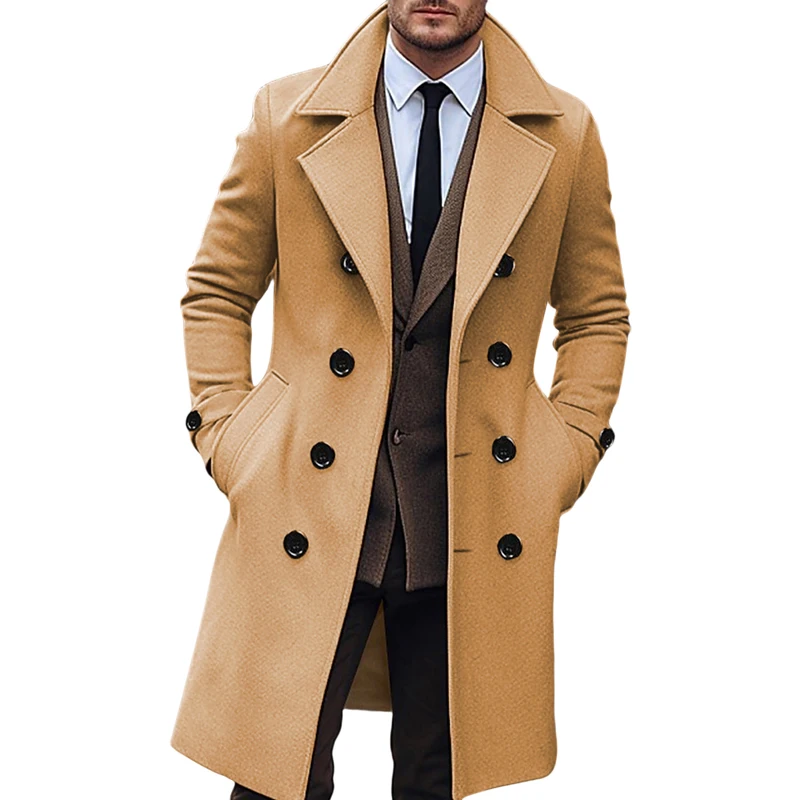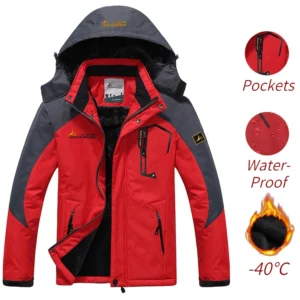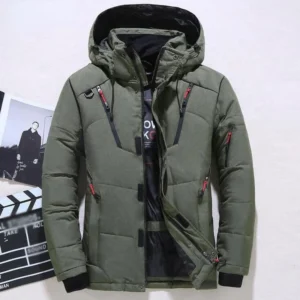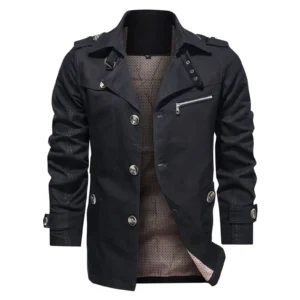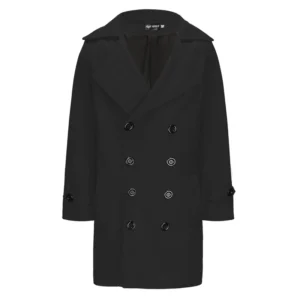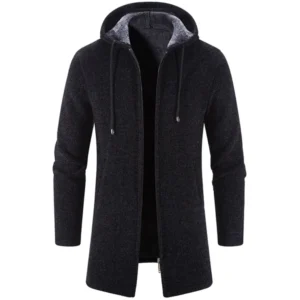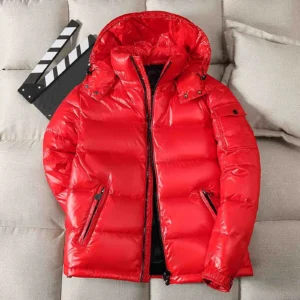The Enduring Appeal of the Classic Pea Coat
The pea coat’s journey from naval decks to city streets represents one of menswear’s most successful transitions from military uniform to civilian wardrobe essential. Originally designed for European and American sailors facing harsh ocean conditions, these double-breasted wool coats provided exceptional warmth and functionality while establishing a distinctive silhouette that has remained largely unchanged for centuries.
What makes the classic fit pea coat so enduring is its perfect balance of practicality and style. The straight lines, substantial collar, and sturdy construction create a masculine frame that flatters virtually every body type. Unlike many fashion items that come and go with seasonal trends, the pea coat has maintained its relevance by striking that rare balance between timelessness and contemporary appeal.
When investing in a quality pea coat, color selection becomes perhaps the most crucial decision. The right color not only determines how versatile your coat will be but also influences how long it will remain stylistically relevant. Understanding the history of pea coats provides valuable context for making this important choice.
In this definitive guide, we’ll explore the core classic colors that have stood the test of time—navy blue, charcoal grey, black, and camel—along with sophisticated alternatives that offer distinct character while maintaining classic appeal.
Why Color is Paramount for Your Pea Coat
The color of your pea coat dramatically influences its formality level and overall versatility. A navy pea coat can effortlessly transition from casual weekend outings to business-casual workplace settings, while a black version naturally skews more formal and urban. This subtle shift in perception means your color choice should align closely with how and where you plan to wear your coat most frequently.
Color selection also directly impacts a pea coat’s versatility across your existing wardrobe. The right choice will complement rather than clash with your current clothing, extending the coat’s usefulness across multiple outfit combinations and seasons. This is particularly important for an investment piece like a quality wool pea coat, which should serve you well for many years rather than a single season.
Beyond practical considerations, your color choice makes a statement about your personal style. Even within the classic framework of a pea coat, color creates distinct impressions:
- Navy projects traditional confidence and timeless sophistication
- Charcoal communicates contemporary elegance with versatile neutrality
- Black delivers sharp, minimalist urban appeal
- Camel offers warm distinction while maintaining classic roots
Proper length considerations combined with thoughtful color selection ensure your pea coat becomes a cornerstone of your cold-weather wardrobe rather than an occasional piece.
The Quintessential Choices: Core Classic Pea Coat Colors
When examining the full spectrum of pea coat colors, four options consistently rise to the top for their enduring appeal, versatility, and classic status. These are the colors that have maintained their relevance throughout decades of changing fashion trends, proving their timeless quality and investment value.
Each color offers its own unique benefits while maintaining the essential character of the classic pea coat. The following core colors—navy blue, charcoal grey, black, and camel/tan—represent the foundation of any well-considered pea coat collection. These options provide exceptional versatility while understanding how color choices might differ between fit styles helps tailor your selection to your specific needs and preferences.
Navy Blue: The Unrivaled Classic
Navy blue stands as the quintessential pea coat color, most closely connected to the garment’s naval heritage. This deep, rich hue was the standard for military-issued pea coats, originally chosen for its practical ability to hide stains and wear while maintaining a sharp, dignified appearance. Today, navy continues to reign supreme for its unmatched versatility across wardrobes and occasions.
The beauty of navy lies in its ability to function as a neutral while still offering rich color. It pairs effortlessly with virtually every shade in a typical men’s wardrobe—from light greys and whites to browns, khakis, and denim. Navy also strikes the perfect balance between formality and casualness, making it appropriate for both office settings and weekend outings.
For maximum versatility with a navy pea coat, consider these styling options:
- Pair with raw denim jeans and brown boots for a rugged weekend look
- Combine with grey flannel trousers and leather shoes for business-casual settings
- Layer over a cream cable-knit sweater for timeless maritime inspiration
- Match with olive chinos and suede chukkas for smart-casual versatility
Navy’s depth also allows it to transition seamlessly between daylight and evening settings, making it the true all-rounder in the pea coat world. For comprehensive guidance specifically on navy pea coats and their styling potential, numerous resources can help you maximize this classic choice.

Charcoal Grey: Sophistication and Modernity
Charcoal grey offers a perfect middle ground between navy’s versatility and black’s formality, making it an increasingly popular choice for the modern gentleman. This sophisticated neutral delivers a contemporary edge while maintaining the coat’s classic character, allowing for exceptional versatility across both casual and formal contexts.
One of charcoal’s greatest strengths is its ability to complement both cool and warm color palettes. Unlike black, which can sometimes create harsh contrast, charcoal softens the overall look while still providing sufficient contrast to create a defined silhouette. This makes it particularly flattering for layering over a wide range of shirts, sweaters, and scarves.
For optimal charcoal pea coat styling:
- Combine with burgundy or forest green accessories for rich seasonal contrast
- Pair with light blue dress shirts and dark trousers for business settings
- Match with cream or white knitwear for sharp definition
- Layer over dark denim for an elevated casual look that maintains sophistication
Charcoal particularly excels in professional environments where its subtle sophistication creates a refined impression without the formality of black. It also performs exceptionally well in urban settings where its modern appeal aligns with contemporary style sensibilities. For broader context on grey outerwear options and their styling potential, exploring the full spectrum can provide additional inspiration.
Black: Sleekness and Formal Edge
A black pea coat delivers unmatched sleekness and a distinctly urban aesthetic that sets it apart from other classic options. While slightly less versatile than navy or charcoal, black offers incomparable sharpness and a contemporary edge that appeals to the modern minimalist sensibility. The color naturally elevates the pea coat’s formality, making it particularly suitable for evening events and dressier occasions.
Black’s greatest strength lies in its ability to create clean, defined lines that emphasize the pea coat’s structured silhouette. This creates a slimming effect that many find appealing, particularly in city environments where a streamlined appearance is often desired. The monochromatic nature of black also allows for effortless coordination with a wide range of formal and semi-formal attire.
For maximizing the potential of a black pea coat:
- Embrace monochromatic styling with black jeans and boots for a sleek urban look
- Create striking contrast with white or light grey knitwear underneath
- Pair with charcoal trousers for sophisticated tonal coordination
- Add a colorful scarf as a focal point against the neutral backdrop
While sometimes considered less versatile than navy, black excels in evening settings, formal occasions, and urban environments where its sharpness and contemporary appeal shine. Understanding how black pea coats differ in appearance based on length can help you select the most flattering option for your style and proportions.
Camel/Tan: Warmth and Distinctive Elegance
Camel and tan pea coats offer a distinctive alternative to darker neutrals while still maintaining classic appeal. These warm, rich tones add an element of refined character that stands out in a sea of navy and black outerwear without straying into trendy territory. The result is a coat that makes a subtle statement while remaining firmly anchored in timeless style.
What makes camel particularly appealing is the warmth and richness it brings to winter wardrobes, which can often skew dark and monochromatic. This visual warmth creates a welcoming impression while offering excellent versatility with both light and dark complementary pieces. Camel also performs exceptionally well in daylight, where its subtle variations and depth become most apparent.
For stylish camel pea coat combinations:
- Pair with dark denim and brown leather boots for a rich, textural casual look
- Combine with chocolate or olive trousers for sophisticated tonal coordination
- Layer over a cream cable-knit or turtleneck sweater for luxurious contrast
- Match with grey flannel trousers for a classic menswear aesthetic
Camel particularly excels in smart-casual settings and daytime wear, where its distinctive character and warm presence create a sophisticated yet approachable impression. For a broader selection of wool pea coat options including camel varieties, exploring curated collections can help you find the perfect tone to complement your wardrobe.
Beyond the Core: Sophisticated Alternatives
While the four core colors provide exceptional versatility, several sophisticated alternatives offer distinctive character while maintaining classic appeal. These options may not be as universally versatile as navy or charcoal but provide unique charm for those seeking something slightly different without venturing into trend-driven territory.
Deep Forest Green offers a rich alternative with historical connections to both military and countryside heritage. This sophisticated hue provides subtle distinction while maintaining surprising versatility with neutrals like grey, khaki, and navy. Forest green pairs exceptionally well with autumn and winter palettes, creating a natural harmony with the season’s aesthetic. Consider this option for a second pea coat or if your wardrobe already features substantial earth tones.
Burgundy or Oxblood represents another distinguished alternative, offering rich character with an aristocratic edge. These deep red tones create a sophisticated impression that works particularly well in creative professional settings and evening contexts. The depth of color provides versatility with neutrals while making a more distinctive statement than standard options. Burgundy pairs beautifully with grey, navy, and camel for elegant coordination.
Those interested in exploring unique but classic color options might also find complementary color guidance for other classic coat styles helpful in understanding how these alternatives can work within a broader wardrobe strategy.
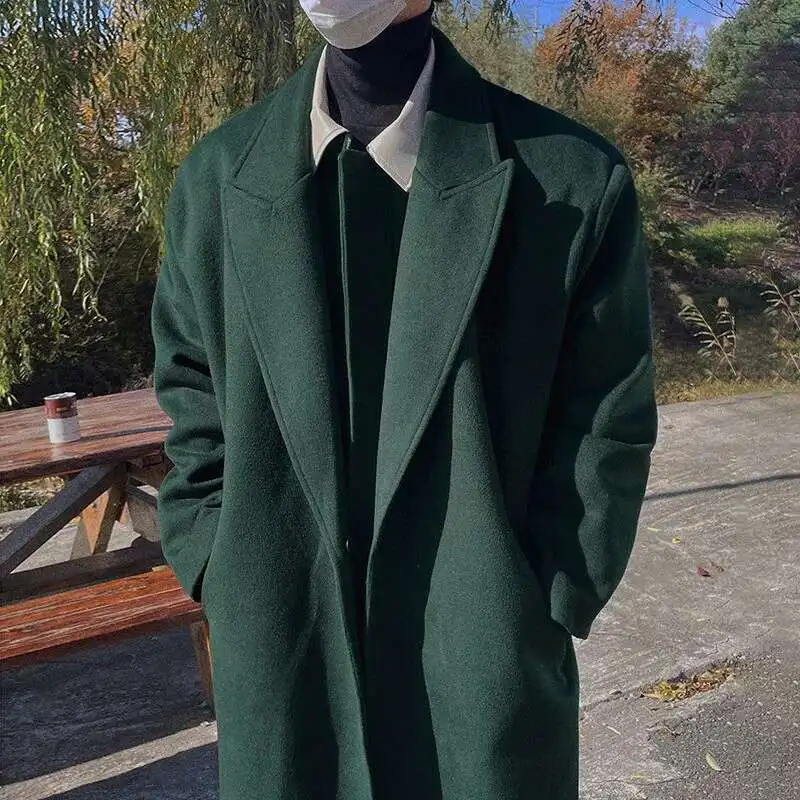
Choosing Your Ideal Pea Coat Color: Key Considerations
When selecting your ideal pea coat color, start by evaluating your existing wardrobe. Take inventory of your most frequently worn trousers, shirts, and accessories to identify dominant color patterns. The most versatile pea coat color will complement rather than clash with these core pieces. For example, if your wardrobe features primarily blues and greys, a navy or charcoal coat provides maximum coordination potential.
Next, consider your primary intended usage scenarios:
- For business and formal settings: Black, charcoal, or navy offer appropriate sophistication
- For casual weekend wear: Navy, camel, or forest green provide relaxed versatility
- For maximum versatility across settings: Navy or charcoal deliver the broadest application
- For creating a distinctive impression: Camel or burgundy offer refined character
Personal coloring also influences your optimal choice. Generally, those with cooler skin undertones and hair colors often find navy, charcoal, and black most flattering. Warmer skin tones and hair colors typically complement camel, tan, and forest green exceptionally well. However, these are guidelines rather than rigid rules—personal preference should always play a significant role.
The fabric texture and weight of your pea coat can also influence color perception. Heavier, more textured wools tend to give colors added depth and dimension, while smoother finishes create a more uniform appearance. This subtle variation can make the same color appear slightly different across various quality levels and constructions. Exploring the full range of pea coat options in different colors allows you to see these variations firsthand.
Mens Heavy Winter Coat, Mens Insulated Coat, Mens Parka Coat
Price range: $175.52 through $237.36 Select options This product has multiple variants. The options may be chosen on the product pageMens Big and Tall Winter Coats, Mens Down Coat, Mens Hooded Winter Coat, Mens Puffer Coat
Price range: $126.44 through $217.01 Select options This product has multiple variants. The options may be chosen on the product pageMens Big and Tall Winter Coats, Mens Hooded Winter Coat
Price range: $80.32 through $106.68 Select options This product has multiple variants. The options may be chosen on the product pageMens Double Breasted Pea Coat, Mens Wool Blend Coat, Mens Wool Pea Coat
Price range: $136.84 through $157.36 Select options This product has multiple variants. The options may be chosen on the product pageMens Cashmere Overcoat, Mens Hooded Winter Coat, Mens Wool Blend Coat
Price range: $128.72 through $139.68 Select options This product has multiple variants. The options may be chosen on the product pageMens Hooded Winter Coat, Mens Insulated Coat, Mens Puffer Coat, Mens Quilted Coat
Price range: $139.88 through $177.72 Select options This product has multiple variants. The options may be chosen on the product page
Mastering the Look: General Styling Principles for Any Pea Coat
Regardless of color choice, proper fit remains paramount for pea coat styling. The shoulders should align with your natural shoulder edge without extending beyond, and the sleeves should end at your wrist bone or just below. When buttoned, the coat should allow enough room for light layering while maintaining a clean silhouette that follows your body’s natural lines without excessive bulkiness. The length should typically hit at mid-hip to upper thigh, creating balanced proportions.
Strategic layering enhances both the functionality and style of any pea coat. For colder conditions, consider these layering combinations:
- Fine merino turtleneck or crewneck sweater over a light t-shirt
- Oxford cloth button-down with a lightweight sweater or cardigan
- Thin merino or cashmere quarter-zip under the coat for added warmth without bulk
- Lightweight scarf tucked inside to seal warmth at the neck opening
Footwear selection dramatically influences the overall impression of your pea coat outfit. For classic pairings:
- Leather boots (Chelsea, cap-toe, or work boots) offer timeless coordination
- Clean leather sneakers create a contemporary smart-casual look
- Oxford or derby dress shoes elevate the coat for business settings
- Suede chukkas or desert boots complement the coat’s casual-refined nature
Accessories provide the finishing touch that can elevate your pea coat styling. Consider adding texture and visual interest through knit scarves, leather gloves, and wool or cashmere beanies that complement your coat’s color. For specific guidance on styling double-breasted pea coat options, specialized resources can help you master this classic silhouette.
Does Color Affect Pea Coat Maintenance?
Different pea coat colors present distinct maintenance considerations that can influence your long-term satisfaction with the garment. Darker colors like navy and black generally show less obvious surface dirt but can reveal lint, hair, and dust more readily than lighter options. Conversely, camel and tan coats may show surface soil more quickly but disguise lint and similar debris more effectively.
For specific color maintenance:
Navy and charcoal typically require less frequent cleaning but benefit from regular brushing with a garment brush to remove visible particles. A lint roller becomes an essential companion for these darker shades, especially if you have pets or frequently wear light-colored knitwear underneath.
Black shows every speck of lint or dust, making regular maintenance crucial for maintaining its sharp appearance. However, it generally conceals stains better than lighter alternatives and shows less obvious wear at stress points like cuffs and collar edges.
Camel and tan require more vigilant protection from stains and may show wear patterns more readily, particularly around cuffs and collar edges where natural oils from skin contact can darken the fabric over time. Spot cleaning becomes particularly important for these lighter shades.
For comprehensive guidance on maintaining wool coats across different colors, specialized care resources can help you preserve your investment for years to come.
Are Some Pea Coat Colors More Timeless Than Others?
When evaluating the timeless quality of pea coat colors, navy blue stands as the undisputed champion of longevity. Its connection to the garment’s military heritage and exceptional versatility have kept it continuously relevant through countless fashion cycles. Navy represents the safest investment for those prioritizing long-term style relevance over distinctive character.
Charcoal grey and black follow closely behind navy in their resistance to trend cycles. Both colors have maintained consistent popularity throughout modern menswear history, with minimal fluctuation in their perceived appropriateness or style relevance. Their neutral versatility contributes significantly to this stability, allowing them to adapt to evolving styling trends without becoming dated.
Camel and tan experience slightly more cyclical popularity but have never truly fallen from favor. These warmer neutrals may see periods of heightened popularity followed by slight retreats, but they consistently return to prominence without ever appearing dated or inappropriate. Their classic character ensures they remain respected options even when not at the absolute peak of their popularity cycle.
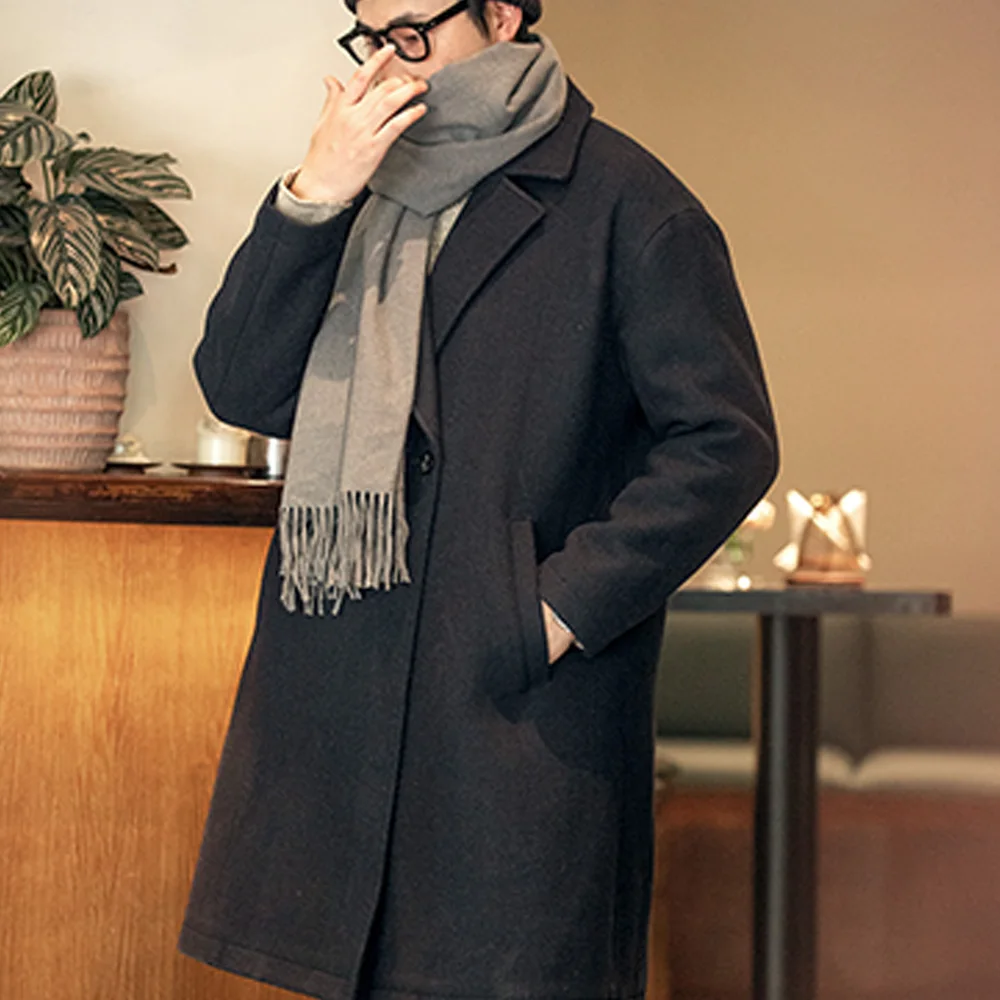
How Should Seasonal Considerations Influence Your Pea Coat Color Choice?
Seasonal light conditions can significantly impact how your pea coat color is perceived and how effectively it functions in your wardrobe. Winter’s muted, often overcast lighting tends to flatten and darken colors, making subtle differences less apparent. During these conditions, the contrast between navy and black diminishes, while camel provides welcome visual brightness against winter’s typically subdued backdrop.
Fall and spring transitional seasons, with their more varied and often brighter lighting, reveal the full depth and character of pea coat colors. Navy displays its rich, deep blue undertones rather than appearing nearly black, while charcoal reveals its complex variations rather than reading as flat grey. These seasons particularly favor the nuanced colors like forest green and burgundy, where changing light brings out their multidimensional quality.
For year-round versatility:
- Navy and charcoal provide the most consistent appearance across seasonal lighting changes
- Camel offers pleasant warmth in winter light while remaining appropriate for transitional seasons
- Black maintains its sharp definition year-round but can appear severe in bright spring light
- Forest green and burgundy typically look most balanced in fall’s golden light
For those planning seasonal winter coat options beyond just pea coats, considering how different styles and colors perform across seasonal transitions ensures maximum wardrobe versatility.
Conclusion: Making Your Definitive Color Choice
When making your final pea coat color selection, balance timeless appeal with personal expression. Navy remains the quintessential choice for maximum versatility and classic character, making it the ideal first pea coat for most men. Charcoal and black provide excellent alternatives for those seeking slightly more formal or contemporary options while maintaining exceptional versatility.
For those adding a second pea coat or seeking something with more distinctive character, camel offers warm sophistication while alternatives like forest green or burgundy provide refined uniqueness without sacrificing classic appeal. Consider these options for expanding an already established outerwear collection.
Ultimately, the “best” color for your classic fit pea coat depends on your unique combination of existing wardrobe, typical usage scenarios, personal coloring, and aesthetic preferences. By thoughtfully evaluating these factors against the color profiles we’ve explored, you can confidently select a pea coat that will serve as a cornerstone of your cold-weather wardrobe for years to come.
A quality pea coat from Metro Cloak in any of these classic colors represents not merely a seasonal purchase but a true wardrobe investment—one that will continue delivering style, warmth, and versatility through countless winters ahead.

